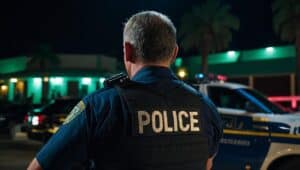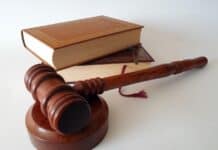
Eyewitness testimony has for a long time dominated criminal investigation and trials. Conventionally, a witness’ ability to recollect events or even identify offenders has been good evidence to the court of law. Indeed, through extensive advances in psychological and forensic sciences, there arises the issue that seems to give many doubts upon its reliability as part of crime proceedings.
A number of factors that distinctly affect the credibility of an eyewitness statement include memory distortion, stress, and leading questions. These must be comprehended so justice can be equitably and honestly served.
The Complexity of Eyewitness Credibility
An eyewitness’s credibility tends to be based on one’s ability to clearly recall and describe a scenario. However, there are several elements that impede this process. As with most events that involve great stress, such as witnessing a crime in progress, a person’s process of memory is disrupted both by the encoding in addition to its retrieval.
For example, the study found that high-stress incidences have a tendency to inhibit a person’s capability for correct recollection of minor minute information. The conditions of darkness, distance, obstruction, and any other conditions might also impinge on perception as well as retention of memory.
Apart from the environmental factors, personal biases and past experiences also impact eyewitness memory. Scientists have found that people fill in the gaps of their memory with assumptions or external information, embedding errors in their testimony. A memory reconstruction process such as this would imply that eyewitness testimony is not an objective account of reality but rather an interpretation of a number of psychological variables.
Limitations of Memory Recall
Human memory is not an ideal recording device. It is fluid and sometimes changes with time. Studies in cognitive psychology have shown how memories can be reinterpreted in the light of new information acquired subsequent to the event. It seems that the testimony of an eyewitness to an event can be revised in line with media reports, discussion with others, or even leading questions from the police.
The misinformation effect is a cognitive bias wherein one fills in the gaps in the memories of an incident with false information. A series of research studies led by Elizabeth Loftus demonstrated the ways in which one could give false witness statements as the result of leading questions and exposure to wrong information. These results hint at the risk of relying on eyewitness accounts solely as evidence without any other corroborative evidence.
Challenges in Identification Accuracy
The greatest concern associated with eyewitness identification is the ability of a person to correctly identify a suspect in a crime. Misidentifications have been amongst the most consistent leading causes of wrongful convictions. According to the Innocence Project, approximately 70% of the wrongful convictions that were cleared through DNA testing involved eyewitness misidentification.
Factors that increase misidentification.
Issues such as cross-racial identification arise every time a witness is requested to identify a suspect of another race. Scientific evidence has indeed illustrated, convincingly, that individuals cannot view facial characteristics of members of other races as well as they can those of their own race, with increased chances for mistaken identifications.
Moreover, poor lighting and brief exposure, along with the presence of a weapon, can all act to distract and mislead the witnesses, further reducing the likelihood of an accurate identification.
Other police practices can inadvertently influence an eyewitness’s identification. For instance, a poorly conducted suspect line-up-one in which only one person usually fits the witness’s description, for example, or through verbal and nonverbal cues-increases the likelihood of a false identification. Optimal procedures for conducting identification procedures include double-blind administration and the use of non-suggestive instructions to reduce testifying errors.
The Reliability of Eyewitness Testimony
In this regard, given the fallibility nature of eyewitness accounts, the prosecution and courts should have such a testimony vetted before it can be allowed to be admitted as evidence. Only when such a narrative is supported by expert testimony, forensic evidence and corroborative witnesses that events can be explained.
Judges and juries are informed about various aspects of the limitations of memory, among many other psychological factors affecting eyewitness credibility, through the testimony of those in the psychological and neuroscientific fields.
This can prevent relying on testimony that is potentially unreliable. In addition, other developments in forensic science, such as DNA testing and security camera footage, may further provide objective corroboration to an eyewitness or refutation.
There are also a number of jurisdictions that have done judicial reforms with the aim of reducing the risks of eyewitness testimony. Several courts have since made pre-trial hearings to determine the reliability of eyewitness testimony before it is presented to the juries. Jury instructions on the fallibility of human memory have also been put in place as a means of ensuring fair trial outcomes.
Conclusion
Eyewitness testimony conventionally has enjoyed the status of one of the most persuasive types of evidence in criminal trials, but recent research has exposed its vulnerabilities, pointing out that wrongful convictions can result from misidentifications and contaminated memories. Stress, external influences, leading questions, and personal bias may affect the eyewitness’s ability to remember correctly.
Decisions can be based on more than one type of evidence, to minimize error when eyewitness testimony is involved. Best practice in regard to police procedures, expert witnesses, and forensic science can deliver a just verdict based on the best evidence available. It is, and will still be, crucial for eyewitness testimony in the legal process but should be treated with caution in order to avoid miscarriages of justice and maintain integrity for any criminal investigation.





